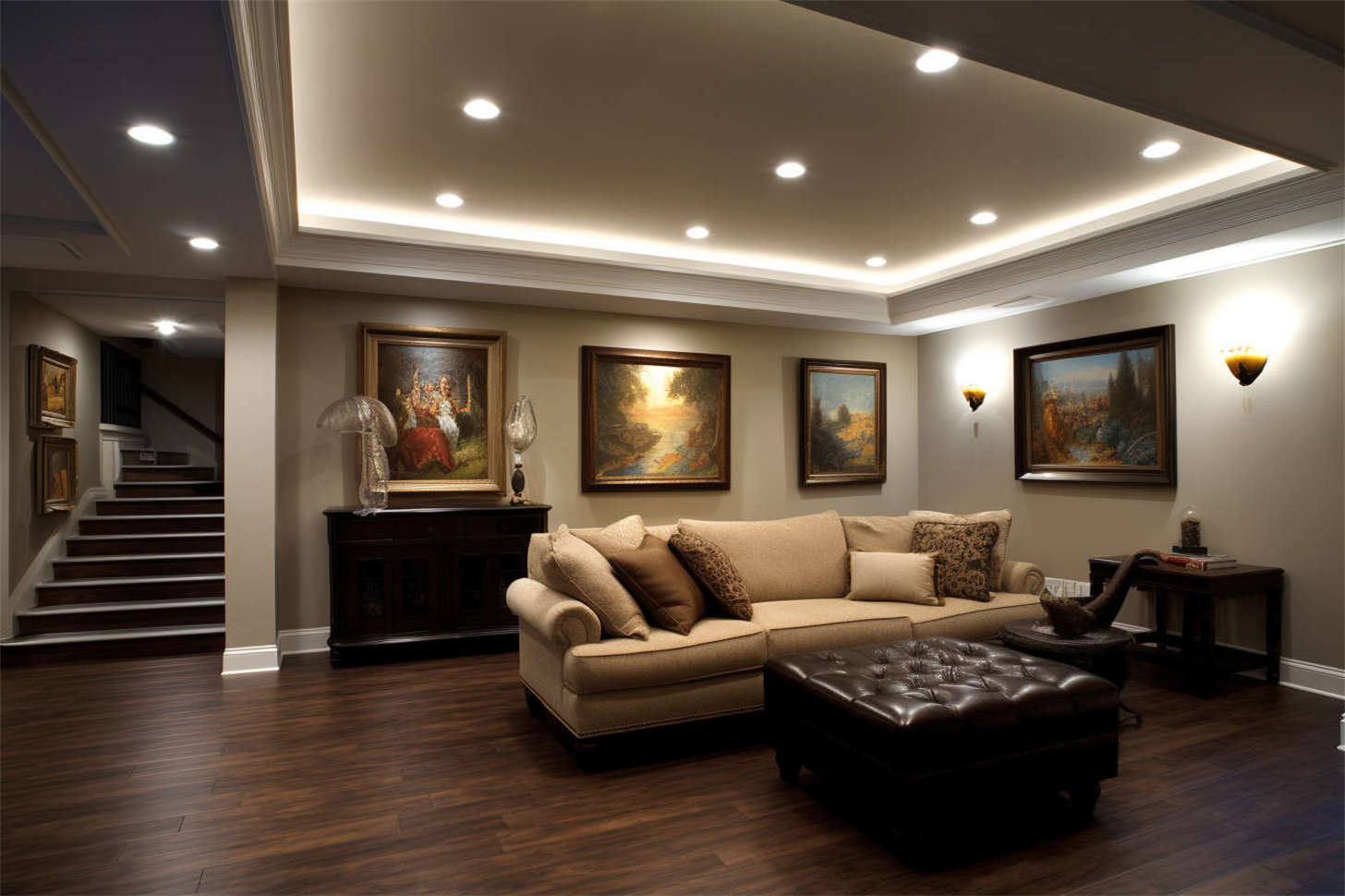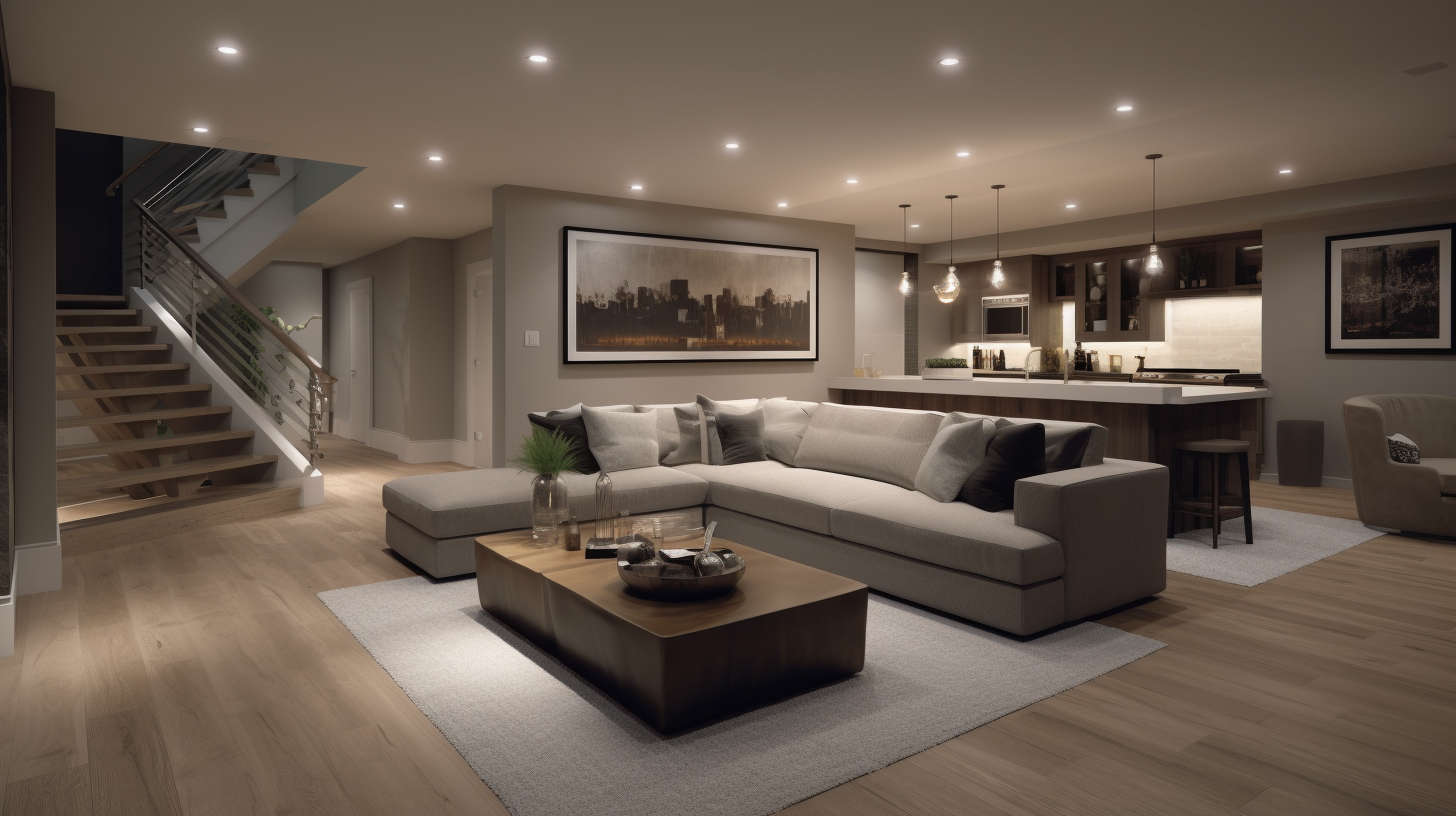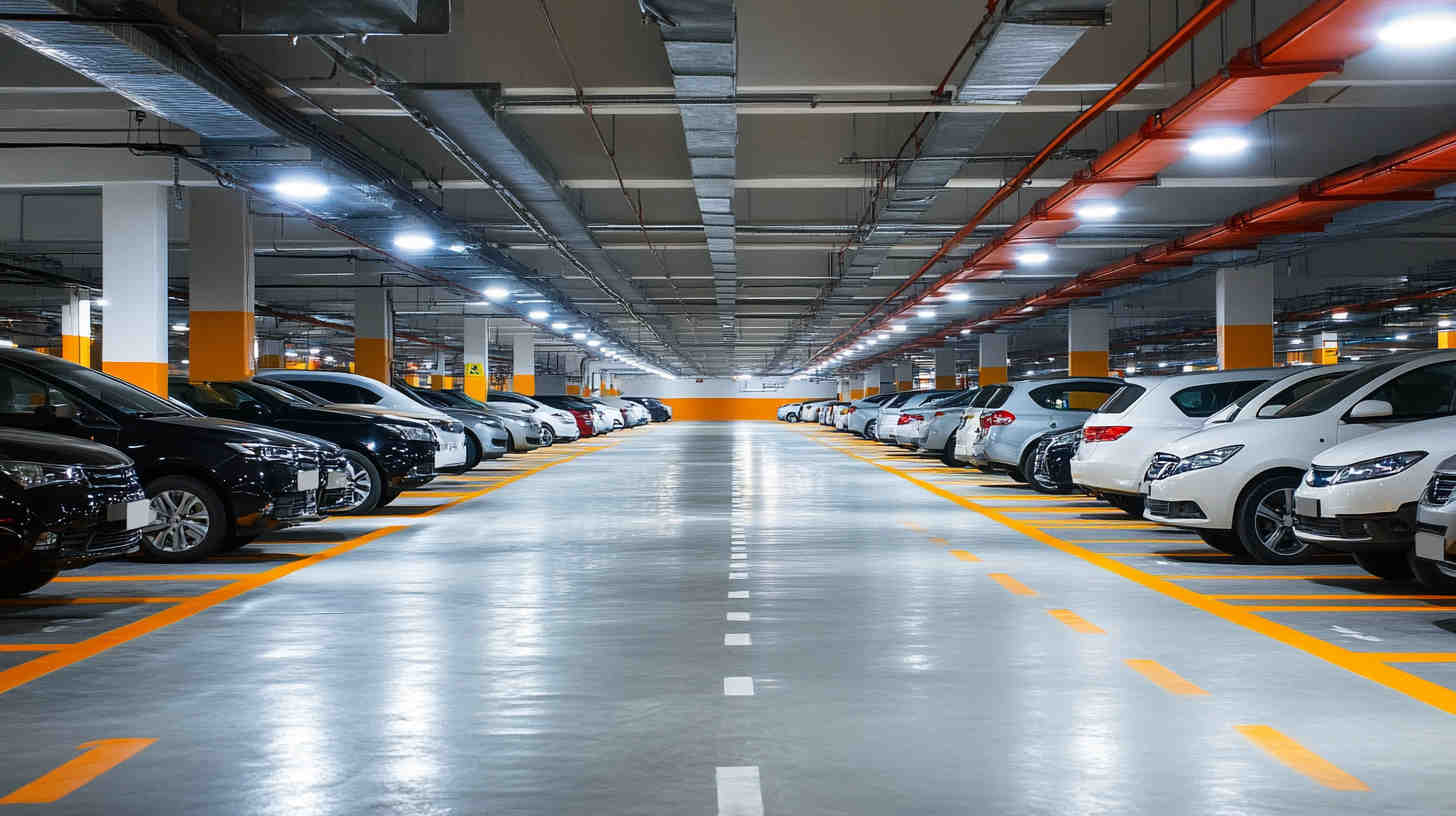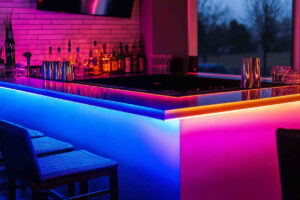A dark, gloomy basement feels wasted. Poor lighting creates safety hazards, wasted space, and lost value. The fix? Smart basement lighting design with LEDs.
The best basement lighting combines functionality, brightness, and style. A well designed basement lighting includes assessing needs, choosing the right LED fixtures, and balancing brightness with comfort. Options include recessed downlights for a clean look, LED vapor lights for utility areas, flat panel lighting for modern design, and bulkhead lights for durability. With proper basement ceiling lighting and smart LED lighting solutions, you can turn a dark storage area into a comfortable living or working space.
Stick with me—I’ll walk you through the essentials of modern basement lighting.
Table of Contents
Basement Lighting Requirements
Basements are unique spaces because they rarely have windows or natural daylight. That makes the right artificial lighting absolutely essential. When planning basement lighting, three main requirements should be considered: safety, usability, and comfort.
Safety comes first. Every step of a staircase should be clearly visible, and corners or low-ceiling areas must not be left in the dark. Well-placed lighting helps prevent trips and falls, especially in basements with uneven floors or storage clutter.
Usability is just as important. A basement used for storage, laundry, home gyms, or workshops needs bright, functional lighting. Fixtures should deliver enough lumens to clearly see labels, tools, or equipment. For these areas, lighting levels of around 300–400 lux are often ideal.
Comfort completes the setup. If the basement doubles as a living room, home office, or entertainment space, the light should feel cozy and welcoming. Warm white LEDs (2700K–3000K) create a softer atmosphere, while neutral white (3500K–4000K) works well for multi-purpose rooms. Balanced light without harsh shadows prevents eye strain and makes the space more inviting.
In short, basement lighting should be tailored to the way the space is used. A mix of general lighting, task lighting, and accent lighting often gives the best results.

Key Features of LED Basement Lighting
LED lighting is the top choice for basements today because it delivers efficiency, safety, and flexibility all in one package. One of the biggest benefits is energy efficiency. LEDs consume far less power than traditional bulbs, making them ideal for basements where lights are often left on for long stretches of time.
Another advantage is low heat emission. Basements usually have limited ventilation, and older incandescent or halogen bulbs can create unnecessary heat buildup. LEDs stay cool, which makes them safer and more comfortable in enclosed environments.
LEDs also give you more design freedom. You can choose recessed downlights for a clean ceiling finish, flat panel fixtures for even light distribution, or vapor-proof lights in areas prone to moisture, like laundry or storage sections. This variety makes it easy to match fixtures to your basement’s layout and purpose.
Dimmability is another key feature. With dimmable LEDs, you can adjust brightness to create flexible lighting zones. Keep the lights bright for working, exercising, or organizing, then dim them down for a cozy movie night or a relaxing lounge atmosphere.
Altogether, LED basement lighting combines efficiency, safety, and versatility, making it the most practical solution for both functional and recreational basement spaces.

Types of LED Lights for Basement
Flat Panel Lighting
Flat panel LED lights are a smart solution for basements with low ceilings. Their slim profile means they don’t hang down or take up space, making rooms feel taller and less cramped. They provide wide, even illumination, so every corner of the basement gets light without dark patches. Flat panels also bring a modern, sleek design element, which works well if the basement is used as a living room, office, or entertainment area.
Recessed Downlights
Recessed downlights, often called can lights, are among the most popular choices for basements. Since they’re installed flush with the ceiling, they don’t intrude into the room and help maintain valuable headroom. These lights create a minimalist, clean look while delivering bright, focused lighting. By adjusting beam angles or spacing, you can highlight specific zones such as seating areas, game tables, or art on the walls.
LED Vapor Light
LED vapor lights are built to handle tough basement environments where moisture and humidity can be a problem. These fixtures are sealed to resist dust, dampness, and even splashes of water. They’re particularly useful in laundry rooms, utility areas, or storage spaces where durability and reliability matter more than aesthetics. With long lifespans and consistent performance, they ensure safety and visibility in challenging conditions.
LED Bulkhead Light
LED bulkhead lights are rugged and practical, designed for both functionality and durability. Mounted on walls, they provide directional light, making them a great choice for basement staircases, entrances, or hallways. Their tough design protects against impact, moisture, and dust, so they’re perfect for high-traffic or utility zones. Beyond their practicality, bulkhead lights add an industrial-style touch, complementing modern basement LED lighting setups.

Basement Lighting Design Principle
Define Usage
The first step in designing basement lighting is to decide exactly how the space will be used. A home gym requires bright, focused lighting that keeps the area energized and safe for exercise. On the other hand, if the basement is planned as a TV lounge or entertainment room, softer, dimmable lighting works better to create a cozy and relaxing environment. If it’s a mixed-use basement, consider zoning the space with different types of fixtures for each activity.
Decide on the Brightness
Basements usually need between 200–400 lux, depending on their function. For example, a storage room can work with the lower end of the range, while a home office or workshop requires higher brightness. To calculate the lumens required, multiply the area of the room (in square meters) by the target lux level. This ensures that lighting is not only sufficient but also tailored to the basement’s purpose.
Build in Flexibility
A basement is often used for more than one purpose, so flexibility is key. Installing dimmers, smart switches, or even zoned lighting circuits allows the space to shift easily between high brightness for tasks and soft, ambient light for relaxation. Motion sensors can also be added for staircases or hallways to improve safety and save energy.
Coordinate with the Room Decor
Lighting is not just about function—it also shapes how the basement feels. Choose fixtures that complement the design of the space. Recessed downlights with warm tones are great for creating a comfortable lounge vibe, while slim LED panels add a clean, modern look to workspaces or minimalist interiors. Accent lighting, like LED strips under shelves or along walls, can add an extra design layer that enhances the basement’s personality.

FAQs about Basement Lighting
What type of lighting is best for a basement?
The best lighting depends on how the basement will be used. LED recessed downlights are popular for living areas because they sit flush with the ceiling and save space. Flat panel lights work well for basements with low ceilings, providing broad, even coverage. For utility zones, such as laundry or storage areas, vapor-proof lights and bulkhead fixtures are excellent choices since they are durable and moisture-resistant.
How much lighting do I need in my basement?
The recommended brightness for basements is between 200–400 lux. To determine how many lumens you need, multiply the size of your basement (in square meters) by the target lux level. For example, a 20m² basement aiming for 300 lux would require around 6,000 lumens in total.
Is cool white or daylight better for basement?
It depends on the activity. Daylight (5000K) is best for work areas like offices, workshops, or gyms, where you need alertness and focus. Warm white (3000K) creates a cozy, comfortable environment, making it better suited for TV rooms, lounges, or relaxation zones.
Are LED lights good for basement?
Yes, LEDs are highly recommended for basements. They are energy-efficient, generate very little heat, and come in various styles that suit different basement functions. They also have long lifespans, meaning fewer replacements and lower maintenance costs.
Which color is best for basement?
For living areas like lounges or entertainment rooms, warm white (2700K–3000K) creates a welcoming atmosphere. For work-focused areas such as home gyms, offices, or hobby workshops, neutral white or daylight (4000K–5000K) provides better visibility and enhances productivity.

Conclusion
A basement doesn’t have to be dark or unused. With proper planning, basement ceiling lighting ideas and modern LED solutions can turn it into a functional, safe, and inviting space. From flat panels to vapor-proof lights, choosing the right fixtures is the key to success.
Need a custom basement lighting design or bulk order of LEDs? Contact Logos Lighting today—we’ll help you light it right.



